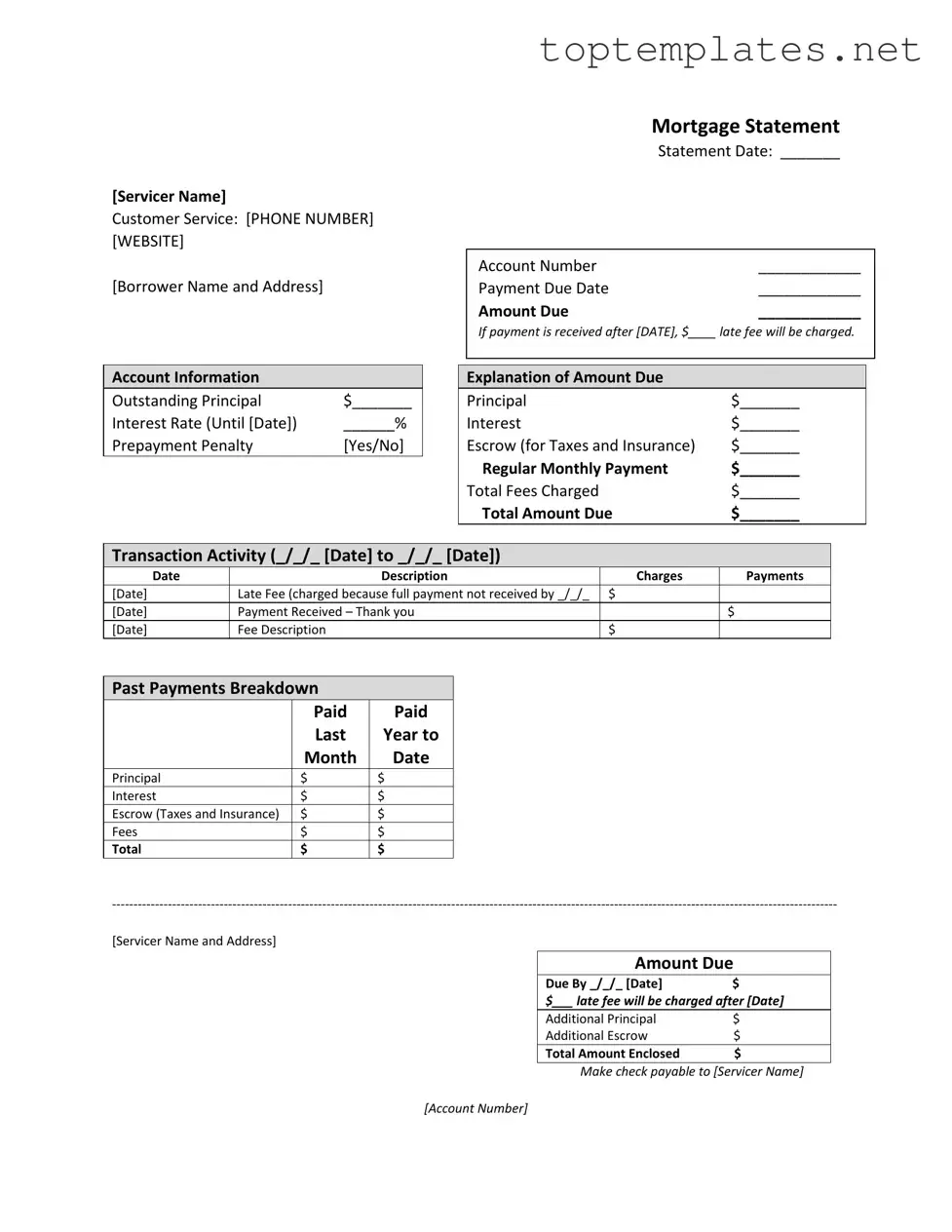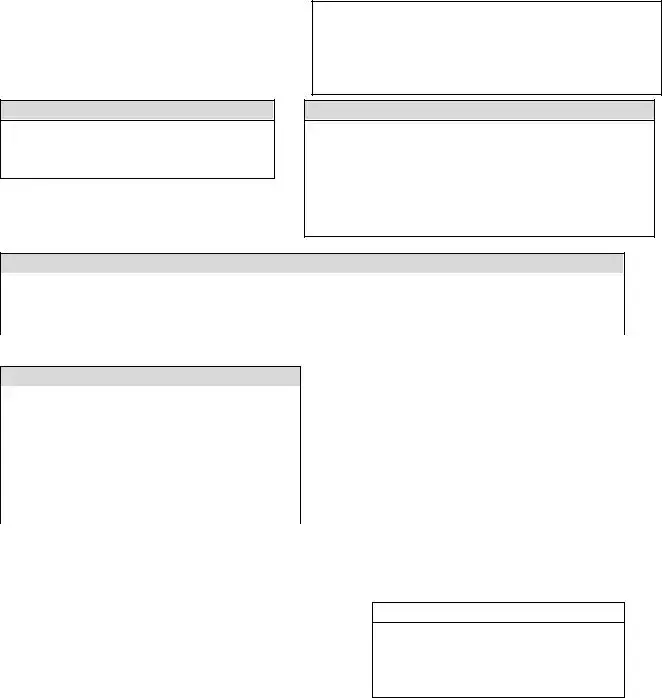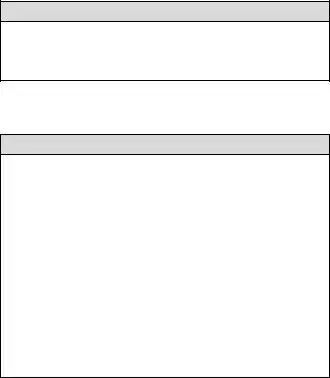What information can I find on my Mortgage Statement?
Your Mortgage Statement provides a detailed overview of your loan activity. It includes the servicer's name, contact details, your name, and address. Key details such as the statement date, account number, payment due date, and amount due are highlighted at the beginning. The statement also outlines the outstanding principal, interest rate, whether there's a prepayment penalty, and a breakdown of the amount due including principal, interest, and escrow. Late fees, transaction activity, and a past payments breakdown are also provided to offer a complete picture of your mortgage account status.
What happens if my payment is received after the due date?
If your payment is received after the due date specified on your mortgage statement, a late fee will be charged to your account. The exact amount of the late fee and the cut-off date for late payments are clearly stated on the statement, allowing you to understand the potential additional cost should your payment be delayed.
How is a partial payment handled?
Partial payments are not immediately applied to your mortgage. Instead, they are held in a separate suspense account. Once you pay the balance of a partial payment, the combined funds will then be applied to your mortgage loan. This policy ensures clarity in accounting and helps you keep track of how much more you need to contribute to meet the full payment required.
What does it mean if I receive a Delinquency Notice?
A Delinquency Notice on your mortgage statement indicates that you are late on your mortgage payments. It details how many days you've been delinquent and warns of potential fees and the risk of foreclosure—losing your home. This notice serves as a critical reminder to address any missed payments immediately to avoid further penalties.
Is there information on financial assistance if I’m struggling with payments?
Yes. If you're experiencing financial difficulties, your mortgage statement includes information and resources about mortgage counseling or assistance. It’s encouraged to look into these resources promptly to understand the options available for managing your mortgage payments and avoid falling further behind.
Can I make additional principal or escrow payments?
You have the option to make additional payments towards your principal or escrow as indicated on your mortgage statement. Additional payments can help reduce your loan balance faster or adjust your escrow to ensure enough funds are available for taxes and insurance. The specifics on how to make these additional payments are outlined, including how to include them with your total payment amount.


